Transparency is something we don’t get enough of in SEO. Through hundreds of posts of strategy, theory, tools, and tactics, it’s not too often that we talk about real examples. Some of the best content at Mozcon this year were presentations that shared real examples of scrappy SEO projects.
My hope is to do something a little bit different. I’ve written philosophically about how to get links, but let’s talk about some real links, and how they were acquired.
The last few months have included a lot of calls to action for the industry, like Tom Critchlow asking us to stop sharing other industries’ content as examples of what we should do. We have a bad reputation in this industry, but seek inspiration by pointing to other’s content. And more recently, the amazing Jonathan Coleman asked us all to do a bit better. And while I do agree that this industry should be striving to present more strategy, I think we could do more to increase the transparency on the tactics we’re already using. I feel like growing into broader strategy, without first coming to terms with our tactics, may leave audiences less equipped to execute them. I think this is why strategy presentations can leave a bit to be desired, because often they’re idealistic mashups of work done by other industries.
Let’s do a bit better. Let’s out ourselves a bit.
Before I start, I get to work with a great group of guys on our inbound marketing team, who should all get some credit. We work with a lot of teams across the company, but these are the guys that are in the trenches day to day. Together, we manage SEO, content, social media, and community management across 10 different languages.

Jump Into On-going Conversations & Make A Statement
After seeing these awesome sketches on Huffington Post, Conor and I felt this same message needed to be made in the gaming industry. Around the same time, Anita Sarkeesian setup up a Kickstarter about Tropes vs. Women in Video Games.
The internet assholes came out in full force and harassed Anita, really putting the role of women in gaming under a microscope. At Big Fish, we work hard to make games for women without ‘girling it up’, so I felt this was a great topic to address.
Girls play core games, but unfortunately they’re often sexualized or used as prizes.
Well, f’ that.
We reached out to the artist of the sketches and hired her to design female fashion designs that were inspired by highly masculine video game characters. We didn’t want to “girl it up”. We didn’t want it to be a series of cosplay outfits. We wanted to personify the badass nature of characters like Bowser, Duke Nukem, and Master Chief.
As two men working on this project, we didn’t want to build this thing in a bubble. Our artist was a female geek, but it needed more input. We went to the experts. We went to GeekGirlCon.
This year my team sponsored GeekGirlCon. We were a sponsor their first year, but this year the sponsorship nearly slipped through the cracks because the owner of the project transferred teams internally. I made the case for my team taking over the project. We decided to show ROI on the event our way, by connecting it to content.
After we drafted our first colored sketches of the designs, I asked the president of GGC out for lunch. At the end of the lunch, I pulled out some folded up sketches from my pocket to show her what I was working on.
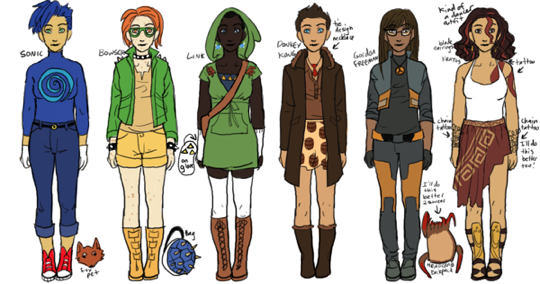
I got her feedback on the concept and the drawings, which I took right back to my team. She shared the idea with the GGC team and they formally backed our content piece and helped us promote it.
Their support and feedback was instrumental, but I think we ended up acquiring more links for GeekGirlCon than our own site (not a bad thing, because our goal was to support the cause). They were kind enough to publish it on GGC.com (Link #1, DA 58) and shared it with their audience on social. The whole project ended up receiving links from over 100 different domains, and I’ll cover some of the others in this post.
Sponsor & Support An Event
Sponsorships are a common in the SEO space. Typically, the practice is to use advance search queries to find sites that accept sponsorships and spend a bit of money for a link. Of course this works, but try to step up your game. Support causes like Child’s Play, which seeks to improve the lives of children in hospitals through video games (Link 2, DA 80). Or old school video game events, like Mario Marathon (Link 3, DA 56), a fan run fundraiser that donates directly to Child’s Play Charity. As someone who has a Hylian Crest tattoo on my forearm, I can stand behind sponsorships like that.
Then step it up even more.
My team sponsored GeekGirlCon, which of course meant we got a sponsorship link (Link #4, DA 58), but let’s do some #RCS also. Not only did we support the event monetarily and with a content/outreach strategy, but we also wanted to step up the expectation for booth space at the event. As SEOs, we had no idea what we were doing, making for some really stressful days, but our team culture is JFDI, and do it well.
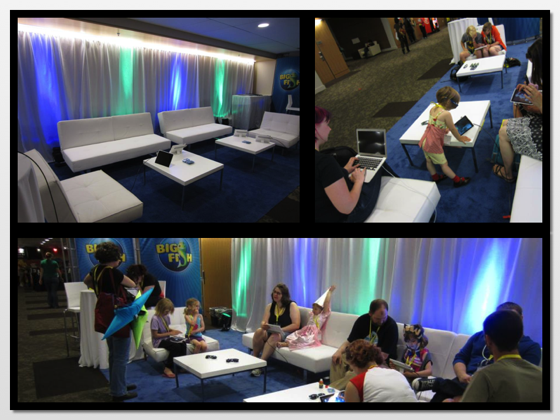
Not bad for a couple of SEOs. The relationships we built with geeks, influencers, social media users, and editors here have been enormous. And the chance to directly engage with your customers, both adults and kids, is invaluable.
I spy @justinrbriggs at the @bigfishgames booth at @geekgirlcon – so good with kids! #ggc12
— Jonathon Colman (@jcolman) August 11, 2012
Why settle for dropping links on sponsorship pages when you can build brand engagement like this?
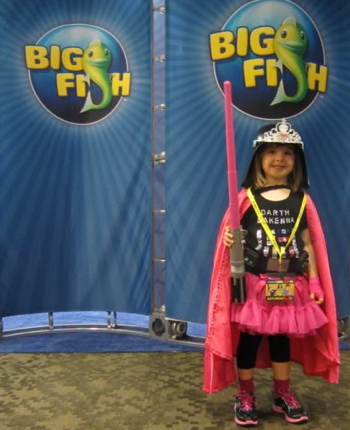
#RCS
Create Making of Videos
If you’re building something, creating something, or releasing a new product, there is someone out there who wants to hear how. Posts like the one you’re reading right now exist because people are interested in the who, what, and how of creating something. Expose this content.
That’s exactly what we did with the launch of one of our mobile games. While reviewing a series of assets we created, I recommended that we leverage a making of video and pairing it with an interview. We would use this to do outreach to a top tier gaming website. The result? An article on IGN.
Create April Fools Content
Creating cotent around holidays is a fairly typical tactic, and every major holiday you’re sure to see a flood of holiday theme infographics (I’m guilty of this as well). One holiday that’s a lot of fun to brainstorm is April Fools Day. This year before April Fools, the mobile game Draw Something was huge, and after a few brainstorming meetings lead by Ryan O, our marketing team ended up creating Mime Something – “The latest game senstation no one is talking about!”
The thing that really set this apart was the polish of the Mime Something design.
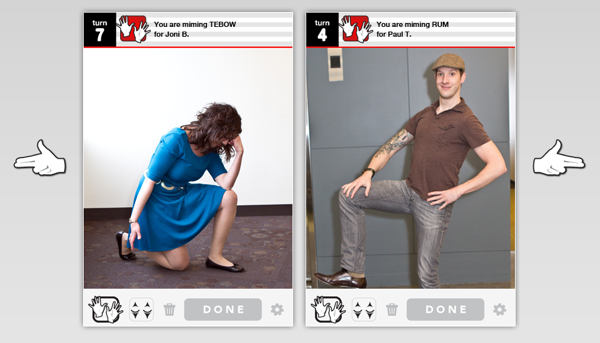
It was all tied together with some clever copy.
Can’t draw your way out of a wet cardboard box? Neither can we. With Mime Something, anyone can play – no artistic skill required!
No undo button? No problem! Just get up off the floor and try to nail The Lean again. Your friends will love watching you throw out your back!
Ready to take your miming to the next level? Snazz up your routine with fabulous accessories from the Prop Shop.
Stop giving life the finger! Let your body do the talking and download Mime Something today.
“The game is so good it left me speechless” – E. Decroux
It was full of fun easter eggs, including pictures and names of employees around the company. Projects like this are fun, because they’re great for building internal exposure inside of a larger organization. It gets people excited about content creation. We picked up some coverage from USA Today (Link 6, DA 98), GeekWire (Link 7, DA 83) and Venture Beat (Link 8, DA 92).
Bring In People With Influence or Credibility
Bringing influencers or those with credibility into a project is a great way to create additional coverage. Mark Johnstone talked at SearchLove and showed an infographic I created about zombies (Link 9, DA 99) where I pulled in a neuroscientist at Berkley to provide the concept behind the science of the zombie brain. The creation of this piece was very similar to some concepts discussed by Ross Hudgens in his presentation Link Building by Imitation, which talks about stealing complex context and simplifying it for consumption. This is what I did when I came across the amazing answer to this thread on Quora about ways to survive the Zombie Apocalypse.
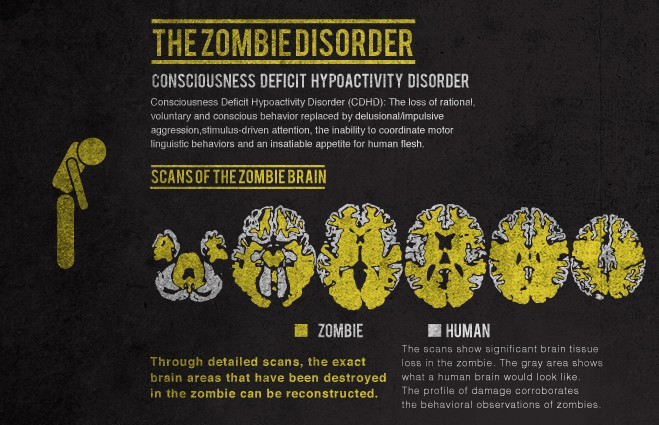
This same idea was applied to our Geek Chic piece. When we created the Geek Chic fashion designs, we knew we had a hit on our hands, because the artist already had a highly engaged audience. Her original Avengers designs went hot on Tumblr, making its way to Huffington Post, organically. With a bit of polish and push from SEOs, we knew it could go further. The other benefit of bringing in influencers is that they can share with their audiences. She shared our piece on her Tumblr (Link 10, SD mR 3.76) as well, where it received 62 likes and reblogs. I stopped keeping track, but some variation of the design was posted on Tumblr blogs hundreds of times.
Just Ask an Editor
There is a lot of conversation about building relationships, not links, which isn’t bad advice, but it can paint the picture that cold outreach to an editor or blogger doesn’t work. If your content is good, and your outreach is authentic and passionate, you don’t need a pre-existing relationship to get coverage I shared my thoughts on this in my post on content-based outreach for link building, and even provided an in-depth answer in the comments on how to find editors you don’t know and target them, even if it’s a cold outreach.
This approach can help smaller companies beat out the larger PR contact lists that larger competitors might have. This was the theme of my Effective Link Building presentation I gave last year.
Sometimes, if you want a link, all you have to do is email them a link to your content (Link 11, DA 87).
Track Usage of Your Graphics
Tracking footprints and image embeds for URLs that haven’t linked to you is a great way to claim easy link opportunities. A little over a year ago, I wrote about using the Scraper Chrome extension to quickly prospect link opprotunities, and followed up in my 18 link building tools post on how you can use it, along with Screaming Frog, to automate the process evaluating coverage that doesn’t include links.
That’s exactly the type of process used to get this link on Fling Girl LA (Link 12, DA 30). They wrote up a great interview with the staff at GeekGirlCon and decided to use one of our fashion designs in the image for the post.
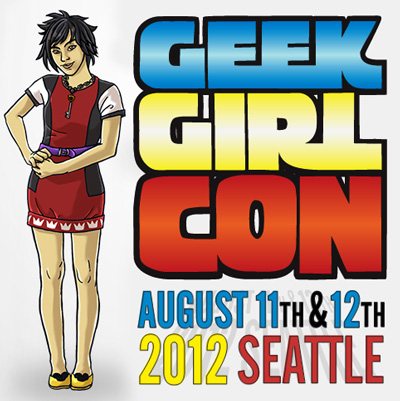
We were excited to have our work showcased, so we just reached out and asked if they could attribute the image.
There have been a lot of great posts that have been written on this topic, including Adam Melson’s post on Link Opportunities Using Just Your Logo (no longer live), Jason Stinnett’s post on how to use Google’s Search by Image for Link Building, or Geoff Kenyon’s detailed guide to finding sites that don’t link.
Quirky Job Ad
Sometimes a link is as simple as a fun job ad. Just like products like Canned Unicorn Meat and the Dream Man Arm Pillow are great content, as well as products, a clever job ad can get picked up. As part of a project, Conor put up an ad for our team to hire a Paranormal Investigator.
Big Fish is seeking a talented Paranormal Investigator to work with our Studios team and help them understand the mysteries of the spirit realm. Paranormal Investigator works within a team that provides a scientific investigation into paranormal phenomena. Successful applicants will train our Studios Team in paranormal investigation techniques and use of equipment along with discussion in emerging theories of paranormal research.
Skills, experience and educational requirements:
- 2+ years of ghost hunting or related research experience
- Ability to operate EMF detectors, ION detectors, Geiger counters, IR cameras, Tri-Field meters, Gaussmasters and other ghost detection devices effectively
- Proficient working with Mediums / Demonologists / Spiritual Leaders.
The ad was picked up on sites like Escapist Magazine (Link 13, DA 85) and Doubtful News (Link 14, DA 47).
Start a Scholarship
At Big Fish, we release a new game every day, sometimes releasing more than one, meaning we release over 370+ games every year for the PC. Many of these games get ported to iPhone / iPad, Android, and Mac, and many more are localized into 9 other languages. The way to keep this kind of content velocity is to partner with a large number of great game developers.

So when my team presented the idea of creating a scholarship to target college students interested in game development, who would become future developers, the idea was loved. That’s not to say it was quick to implement. We went through legal, finance, PR, and executive approval. We worked through operational items likes rules, processes, and the team that would evaluate the applications.
We weren’t sure how well it would do, so we didn’t invest significantly in the polish of the design, but next year we hope to expand the program.
The problem with scholarships in SEO is that people spam them to death to chase .edu links, with little thought about the relevance or value it brings your company. Don’t do this. We specifically included many departments, and pushed it up to the senior management level, to make the buy-in more holistic. The good news is that university departments are becoming more savvy as a result of being spammed with requests, increasing the barrier to entry for scholarship programs. We placed a BBB badge on the page to improve our placement rates.
A few links came from sending out a company wide email about our new scholarship. We have a number of employees who are alumni or have relationships with various universities. A few people forwarded our email along.

A bit of outreach muscle can really help get the word out, but the links can come in naturally. The scholarship has been picked up on high school and college websites, like Princeton, UTM, Clemson, and EDCC. Over 110 schools have linked to our scholarship and we’re on pace to receive hundreds of applicants by the deadline date.
Share With Those With Clout
Part of my process for launching an outreach campaign starts with an early, pre-launch, brainstorm of personas, sites, and verticals. This is to identify who we’ll be outreaching to, the story we’ll be telling, and how we’ll do it. We get together as a team and start by throwing personas and stories on a board (which we later refine).
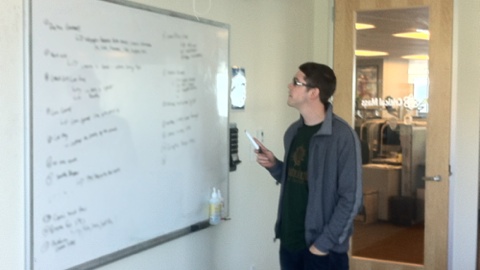
Conor brainstorming outreach personas
We strive to find more unique approaches to launching content and some verticals require a bit of clout. In this case, one approach is to reach out to individuals in a niche. We did this when we reached out to staff at GGC, but you can also reach out to subject matter experts who can help spread your message. Other’s sharing your story can often be more powerful than your own outreach emails, and can lead to additional coverage (Link 17, DA 70).
Create Content Around Engaging Topics
When we created the Geek Chic artwork, we did it to make a statement about the role of women in video games. We jumped into another engaging topic when we published an environmental inforgraphic (put together by an agency). Although we felt we were just sharing interesting facts and data, it sparked a number of debates about our intent and the nature of digital downloads vs. purchased games.
It kicked off a conversation on Reddit. The coverage on Kotaku was viewed 14,600 times, received 132 comments. Although neither of these linked back, they kicked off great, highly engaged, conversations. The topic was very divisive.
This divisive topic lead to a broad range of coverage, like a post on sustainablog (Link 18, DA 73), Living Green Mag (Link 19, DA 51), Inside Games JP (Link 21, DA 71), and 4Players.de (Link 22, DA 73).
We saw a lot of international coverage on the graphic, so I a did an interview with a print French gaming magazine to talk more about my views on videos games and the environment – allowing us to leverage online content for international PR.
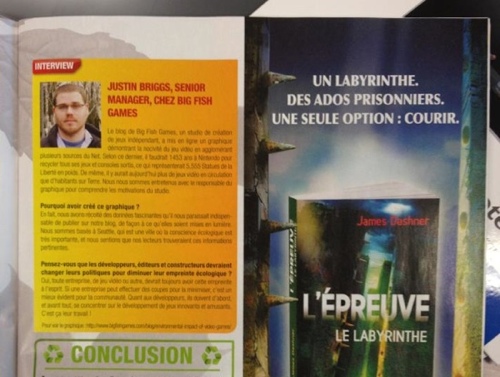
Make Online Content Tangible
As part of our content strategy around GeekGirlCon, we printed off posters to give away to people who visited our booth, as well as bloggers and editors.
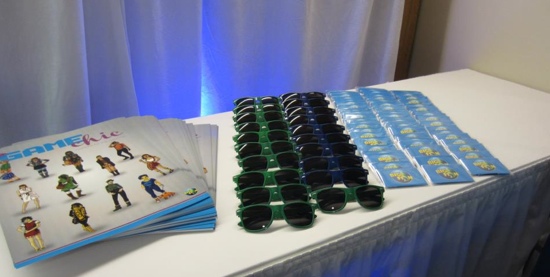
While at GGC, I was able to meet the amazing Jill at The Mary Sue in person and give her a physical poster of our art work. We hung out and talked for a while, and we now follow each other on Twitter. She covered it on The Mary Sue (Link 23, DA 82), which was the perfect audience for the content, and it was picked up on Mashable (Link 24, DA 97) as a result.
Build Processes Into PR
Outside of projects directly managed by my team, we work closely with other teams internally, such as PR, to assist, education, and build processes to improve link acquisition. The natural coverage you receive as a result of creating great products and getting press around it, is one of the most scalable ways to acquire a diverse set of links from high domain authority sites. However, a few missteps can cost you a lot of links.
We had such a problem when we announced the launch of a new game streaming app without a dedicated landing page. The problem is that coverage on the story had no place on our domain to reference when writing about it. Most coverage cited the Bloomberg article, which had the most authoritative information on the app. This wasn’t a big concern, until Apple removed the app from the App Store a few days after its launch.
The story took off, getting coverage all over the internet.
In the week that followed, I found over 200 unique domains that wrote about the story. 87% of those domains linked to the Bloomberg article and not to BigFishGames.com. A hard lesson, but it also provided a lot of ammunition to change processes, allowing the SEO team to be included in all announcements and product launches moving forward. We’ve created processes that require all major announcements to require a land page, or blog post, to cite. Since then, our PR team has transformed into a link acquisition machine.
When we launch products like Unlimited, we’re able to pick up links from sites like gigagamers (Link 25, DA 40), Massively (Link 26, DA 94), and TechCrunch (Link 27, DA 97). Many news/launch stories don’t have to be individually pitched, outside some of the early stories, but if PR isn’t working with our team to ensure that a linkable URL is created and placed in releases and pitches, link opportunities can be lost.
Like the app removal opportunity, you can’t always predict news that will follow your news. After the announcement of our service, Gaikai, a streaming game service, was bought out by Sony for $380 million. This kicked off a whole new set of stories about cloud gaming, but this time our team had recommended creating a sneak peek blog post that could be cited around the story of our launch, and we picked up a handful of links we might have lost otherwise. Not only that, but we followed up answering customer’s questions in comments, releasing additional information not found elsewhere, picking up a few additional stories.
It’s important to note that Big Fish has provided some clarity by way of SEO Coordinator Conor Murphy on the issue of their current download service’s future. After our initial report, many of you were concerned at the potential that there would no longer be a choice to use Big Fish Games as you normally had. At the time, we had phrased the news as Big Fish’s “move” to the cloud, and apologize if that caused any confusion.
– Gamezebo (Link 28, DA 72)
Conor extended this policy by revising the game release process on games to allow “pre-launch” pages to be created for games that are being marketed before launch. This process allows the product’s page to be created by our platform before the product is available. We can place promotional material at this URL, so that links built before the game’s launch are pointing at the URL where the game will ultimately live. So when Games.com exclusively published one of our game trailer (Link 30, DA 89), we were able to get a direct link to the game’s soon to be product page.
Custom Asset & Interview
One of my favorite tactics, that I mention as often as I can, is leveraging custom assets and interviews. This is especially powerful for seeding content campaigns, because you can get top tier sites to cover your story, kicking off a flood of traffic and social shares to capitalize on. By reaching out to a site before launch, you are able to offer an editor the ability to scoop the story. You can time your launch to publish together. In addition, you’re providing access to content that nobody else can get their hands on. This early access, paired with a series of unique assets, is a good way to work with an editor.
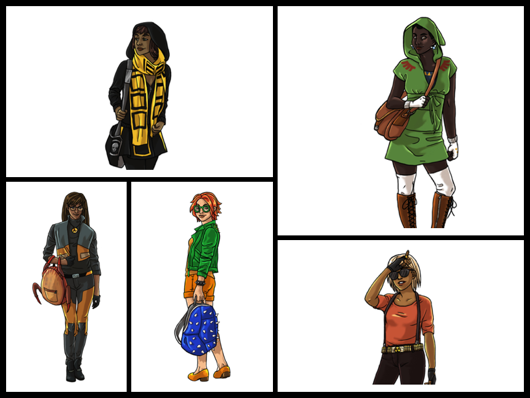
When we published our Geek Chic piece, I worked with the artist and the president of GeekGirlCon and connected them with an editor. They both provided exclusive interviews about the project, which really helped build a story and authority around the campaign. This two part interview was paired with a custom set of assets. The content being published was a large one piece asset, but we took the original high-res art pieces and created 12 individual images sized to fit the layout of their site. This all came together as this great article on Wired (Link 31, DA 99).
(I’m going to sneak in a quick trick here. When you get published on a top tier site, keep an eye on how their recommendation and popularity mechanisms work. Are they based off views? Engagements? Comments? Understanding how these systems work can increase the shelf life of a piece of content on their site by keeping it visable longer. For example, if the homepage of a site is automated to a degree by content’s popularity, you can use StumbleUpon ads to drive high volumes of traffic at the URL keeping it placed high on the homepage, increasing the exposure from that site’s audience.)
This interview + asset tactic is one of my favorites, because in the last 5 years, I’ve had 100% success with it. I was even using it back in 2009 when I was working on the launch of the new Backyard Burgers website. We picked up a story on devot:ee (Link 32, DA 61) by putting together an interview with a developer on the project and another story on BurgerBusiness (Link 33, DA 45) by putting together an interview with their marketing manager.
Keeping It In The Family
Let’s follow Jonathon Colman’s advice, and commit, but let’s keep it in the family. Let’s not just share content created by ad agencies and talk about how it’s what we should be doing.

Love this from many points of view. 🙂 Thanks for being part of what made GeekGirlCon ’12 so successful.
Thanks Erica! GeekGirlCon was a blast, and certainly one of our biggest learning experiences of the year. And thanks to you, and everyone at GGC, for your help and the event you put on. 🙂
Very nice article man… Thanks for sharing some of your strategies!
A good solid article with lots of advice and tips. Thank you for sharing, much appreciated. David
Yes, yes, YES! Love this idea of cross-channel link-building — earning your links, brand awareness, and positive perception via the things that you do in real-life versus the things you do online.
We always say that search marketers are all about relationships, but rarely do we see how they build those relationships, especially in such an open, transparent, and authentic way. I love that you went to the trouble of documenting the links and all of their touchpoints while standing up for a cause that you believe in.
Thanks for sharing this, Justin. Fantastic work! And it sounds like you’re putting together a dream team over at Big Fish. Well done.
@Jonathon
Thanks! This post was certainly inspired by your recent post. I hope it leads to more posts like it.
Looking back over the last year, I was really excited about what our team has accomplished. Everyone on our team came from our Customer Support department, and most of this post is an outline of the SEO training I put the team through. For me, recounting those memories is what this post so enjoyable to write for me.
I said the same thing in my last post. We should be demanding the details, while you provided them. Most SEOs just don’t provide like this, and we should all start asking why.
Major props. This is most certainly not fluff.
@Bill
Thanks Bill, means a lot. I just spent a hour reading through your blog. I need to drop in over there more often, you have some really thoughtful content.
And I agree, I’d like to see more posts like this. I considered calling out link builders I respected to share, but didn’t know if it was bad taste. I hope this transparency can help others start to share more of what they’re doing.
But at the same time, I can understand the difficulties of sharing. On the agency side, most SEOs have some type of NDA. This is why I don’t talk about much of the work I did. These days people know where I work, our content is public, and so are all the links to our domain for anyone who wants to poke around OSE. Anyone who has the time, and is interested enough, could certainly follow what we do.
I think one of the keys is to strive to do the type of SEO you want out yourself on. I think the more we do this, the more others can see that SEO can have tangible value.
I was lucky enough to see Justin and his team do a lot of the work you see in this post from the inside (I used to swim in The Pond).
As inbound marketers, we all love links and it’s great to see them delineated in this post. What you don’t see is what these projects accomplished behind the scenes. Among other things, they helped build the Big Fish brand, they introduced core gamers to casual games, they helped support GeekGirlCon, and they got Big Fish Games’ Studios content (which is amazing) out of the 2nd floor and onto the web.
Although it is tricky to quantify and measure, the impact of this work goes far beyond the links (although those are great to). Nice job, fellas.
@Ryan
Thanks Ryan! The Mime Something project you lead, was epic, and I thought it was a great example of creative link acquisition. Your creativity will be missed, and hope things are going well over at Redfin.
Thanks Justin, its a great article and i appreciated all the info.
To add to the stickiness of the initial in house article used as the sites source on other sites, you could set up a company vlog. That way your site is a far better place to source than Bloomberg and the like for news about Big Fish activities.
Brilliant post, I love the creativity!
Thanks Josh! Loved writing it.
Love this article – really lights up a whole range of possibilities for generating inbound links.
One question though – how much do you think the fact that you’re pushing something really cool helps in garnering this inbound love?
In other words, would you have had the same success if you were pushing dental floss, or boring widget X business to business…
I think it helps. I’d love to see someone share examples in less exciting niches.
When you have something that’s “cool” or you enjoy, I think you work more passionately and put the extra hours in without thinking of it as “work”. I think this helps it be more successful. However,I don’t think it prevents someone from being successful in a niche they dislike, or even hate. I’ve promoted some businesses I’ve hated, and hated myself for doing it. It was my “job”, so I’d do what it took to make it successful. However, it does have an impact on your happiness and I think it’s easier to burnout or lose motivation on the project. Your work might not be as good over time as it was at the start if you let it impact your motivation. Pushing something you personally like really helps prevent this.
Excellent write up from beginning to end, and thank you for providing so much detail that was easy to follow and understand.
What about small companies that may not have the “clout” or big name companies to pick their brains or work with? New upstarts don’t always have the ability to start sponsoring other causes to get their name out there. What would you then suggest for the fledgling new upstart?
Thanks Scott!
Yeah, some of these tactics don’t work for boring industries, or small / local businesses. Or like you’ve mentioned, in the startup space. I believe smaller companies can compete, but they’ll need to rely more on scrappy tactics, since budget is limited and the scope is different.
Because I tried to give real examples of things I’ve worked on in the last year, I was limited. I’m always happy to tackle ideas in future posts. As Dan Shure mentioned on Inbound.org, I hope others will step out and do this post for those doing marketing for small / local businesses.
The great thing about small companies is that they can move so much faster, and have a lot less risk. This allows a company to market in ways larger companies can’t (or at least not effectively / quickly). If you’re up against a big company, I’d really look at the things you can pull off faster, better, or more transparent than they can.
Justin – This is great on so many levels. Thank you for being transparent and for helping others generate ideas for their own efforts. Well done!
Thanks Joshua! I’ve been wanting to write this for a while. Was a lot of fun reflecting back on the work.
A nice article, but so many of these “how to get links” articles are written about relatively interesting topics. How about one about car insurance, credit cards or b2b construction equipment?
Hey Mark,
Certainly, those topics are much harder than video games. I don’t have any personal examples in those verticals in that last two years, but I hope another SEO would be willing to come out and talk about real examples in boring verticals. Dan Shure mentioned on Inbound.org that he’d like to see a small / local business version of this post. I’d love to see that, because some of the things I discussed are out of scope for companies with tiny budgets.
Personally, I think there are ways be creative in most niches, not to say some aren’t hard. And if it’s hard for one site, than it’ll be hard for most sites in the same vertical.
And unfortunately, as long as I’m working in the video game niche, those will be the examples I can give. Hopefully someone else will share examples in other areas. I can always speak theoretically about how one could build links in niches like that, but in this specific post I was trying to stick to examples of things I’ve actually done, not just ideas I’ve thought up and don’t know if they’ll work.
Maybe I can tackle that in a future post. 🙂
This is all fine and dandy for your industry.
Hey Doug,
Certainly, the video game industry is a fun and creative industry to do marketing in. Some industries are a lot harder and I’ve had a chance to work in some boring industries when I consulted. Unfortunately, I don’t have any personal examples I can share in those industries, but I hope that other SEOs will start talking more openly about tactics, so we can see creative examples in hard industries. Surprisingly, even in an industry like mine, there are a lot of people doing SEO that isn’t very good or creative.
Justin,
thank you very much for sharing your experience.
Hi Justin
Great post, thank you. You talked about this a bit at SearchLove London, I think we really have to think outsode the box these days instead of just jumping on the next SEO bandwagon.
I think there is a definite advantage to working in a “fun and creative industry” as you may receive more opportunities from those who are already thinking ‘out of the box’, but there is something here for everyone.
“Girls play core games, but unfortunately they’re often sexualized or used as prizes.
Well, f’ that.”
I *like* you guys.
Haha, thanks 🙂
Great article, but to be honest… This is not SEO. This is simply doing your job with a bit of pr and a links are a chance by product this.
I work in a no-frills service industry. Yes, I could create a gimmic to make it fun and sharable, but to be honest – this would devalue the business and what it was trying to achieve. e.g. You don’t get serious lawyers asking people for links to their websites. You don’t get banks requesting reviews / recommendations. So as you mention, it would be interesting if an SEO with experience getting links from boring industries (which most industries are) in comparison with computer games.
Hey Ahmet,
Thanks for the comment.
I think there are a wide range of feelings on “what is SEO” these days. Unfortunately, I have to disagree with you. Of course, some of this includes cross-channel traditional marketing (that doesn’t make it not SEO), but I’m giving examples of work that leads to link acquisition, with the intent to acquire links. I strive to approach SEO in a way where other channels gain. I will agree that it is simply doing my job, which is head of SEO. 🙂 – There are a large number of links that we acquire through other means, but I left them out, because they do happen as a by product. For example, I didn’t count the Bloomburg articles in the “33 Links”, because I didn’t play any role in those articles. I did try to speak to how SEO involvement could have pulled more links out of existing processes. The examples given here aren’t a chance by product. And I think doing education and building processes that improve the efficiency of “by product” links is good SEO.
And although my industry is video games, I felt it would stil be valuable to share examples. I know they won’t be useful to everyone in every vertical, unfortunately. 🙁 I also understand the challenges of no-frill industries. I’ve done SEO work in medical supplies, wellness programs, payroll, real estate, B2B enterprise software, education software, and a law firm. Hopefully someone with recent examples will step up.
Great article, very creative approach!
Great actionable advice, Justin. Congrats on making the Moz Top 10!
Thanks Derek! Was excited when I saw that email come in.
Thank you for such an informative article. I feel that I have learnt a great deal about link building (plus a lot more) after reading this.
I have added this to my SEO/linkbuilding resources so I can keep coming back to it for inspiration.
Awesome tips Justin, congrats for being featuring on the MOZ Top 10 …. just to add here, for small businesses, creating high quality tips / content for local and niche based bloggers is another cool way to get relevant back links ..
Your post introduced me some of the best practices to build links. Oh ya that PPT is a wonderful work
Excellent post ! Justin
Great idea for a post – too many people just outside the SEO industry think that link-building is either some kind of magic or all about link-wheels, spamming, etc.
I think your transparency on this particular experience shows the creativity, and real value of SEO. Thank you!
This post takes off directly from Colman’s but it’s more like a watered down, DIY version of that philosophical piece.
A lot of people (who do SEO) look at marketing, SEO and link building as a technical process. There’s a huge shift taking place in how SEO works: it’s all about engagement now. It’s more like making friends. But unfortunately, folks don’t look at SEO that way.
The way you’ve written probably would get set as a style guide someday: a curious combination of getting the underlying philosophy of inbound marketing along with a practical guide (or say, a resultant of applying the philosophy). We definitely need content like this to take the industry forward.
There’s still the problem of the half-baked folks who will still purely rely on the technical side without giving a forethought/afterthought to the underlying psychology behind building links (engagement, relationship building, brand value etc.) but then, for those that dare to think outside the square, your article will be a powerful beacon.
Thank you Justin.
Very cool article going through a practical example of how ‘great marketing’ is used to build links and inbound marketing. Thanks for even sharing the mistakes you guys made 🙂 certainly a great value post.
This is the most whitehat link building tips I have ever read.
Love it. Great out of the box thinking. I just have to apply the same creativity to our industry. Easier said than done. Fantastic post.
Great article. It can be very difficult in a post-Panda/Penguin world to even conceptualize where to begin link building, and this is excellent brain food.
Love the real-world examples of links that you/colleagues have obtained.
Thanks Justin, Some great link building inspiration for 2013. Loved the “Quirky Job Ad” as well as the idea of making content tangible through giveaways.
This is awesome. Thanks for taking the first step. It’s a great statement for the SEO industry and a great resource overall.
I didn’t understand half of what you said, but I did benefit from the other half 🙂
Thanks for helping de-sexify the girls in gaming.
I like your approach. After all, link building makes no sense if the links don’t come from closely related topics and websites.
Thanks for sharing your thought and methodology.
All the best,
Diego
Hi,
Instead of sponsoring event and all you can get quality links from the guest post or advertise on other’s blog. isnt it?
What about working to de-cannonfodderify the men in gaming?
Since when are all males musclebound invincible killers?
Is it positive to portray men as a series of mindless headshots?
Great ideas and it looks like some great links came out of them. I’ve been successful with sticking to guest posting (haven’t had time for much else). Thanks for sharing and I hope someone was inspired to go above and beyond to earn a link from this post.
I wish Mime Something was real, I’d play it!
Comment
I liked all what I read but what about businesses that are more mundane and not as fun as gaming?
I thought about sponsoring a scholarship but I wonder if my initiative would be acceptable from a university? It would seem that if you are a potential employer to a grad and especially if the learning institution covered courses related to the business that might make more sense. My business would not be seen as a place for grads to expect a job. I wonder if it is worth a try anyway?
not bad justin, I will challenge you on a few like “sponsor a scholarship” – I know you can do “$100 scholarships and such, but it’s almost like you are saying, “Build a spaceship, NASA will then give you a link on nasa.gov – it’s that simple” :0 Anyways, some of these ideas come down to one simple thing: money. I’m not saying buy links either, but that almost is what it is.
These are great techniques. I really like that Zombie infographic. That is the entire purpose is to make something complex more simple and that is why they are so popular.
I’m not sure when you wrote this, so I may be a bit late to the game. But this has to be one of the best link building guides / idea farm I’ve read in a while – if not ever. It also resparked my pride in link building and SEO in general – as the industry has been getting a lot of flack lately.
I have spent the last few days creating a n00b link building guide for my company and decided to attach an ‘advanced’ guide at the end. However, I’m thinking of just scrapping the advanced guide, and posting a link to this article instead – as it covers basically everything I meant to go over – but a thousand times better.
This is the kinda creative stuff, that makes one not to complain about lack of resources for success.
Great ideas. Cyrus recommended I start reading your blog. He was right. I can use a lot of the information you present.